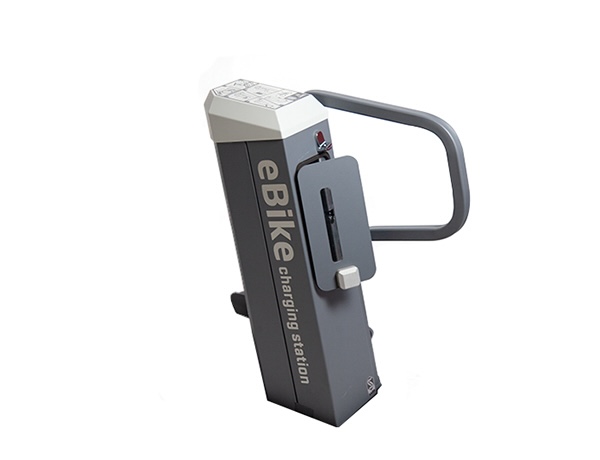Once a rider has exhausted the charge in their e-bike’s battery, few people face any option than to park their e-bike and recharge it, a process that can take anywhere from three to eight hours, depending on the size of the battery and how quickly the charger can deliver power to the battery—a large battery and a 2-amp charger could require the whole night to replenish the battery.
Clearly, that’s not practical for businesses that may make more than 100 deliveries in a day or riders with long commutes, so cities have begun to examine two different strategies for building infrastructure to meet the needs of e-bike riders.
One option is to follow the example of charging stations such as Tesla’s superchargers, positioning them where e-bike riders are likely to be found. The other option is to offer battery swap stations in similar high-traffic areas. Both have advantages and disadvantages and we’re going to take a dive into what those are.
Charging stations

The simplest option for cities to support e-bike recharging is to offer charging stations. While there are a number of designs for these, with many already in use in Europe and Asia, these typically share the following features: There is a secure rack to which the rider can lock their e-bike and that rack includes an outlet the rider can plug their charger into.
By simply providing a grounded 110V outlet that the rider can plug their charger into, cities can sidestep the issue of the many different charger designs on the market. They provide the power and a secure place to park the e-bike while it charges, and the rest is up to the rider.
The benefit to this approach is that it is brand-neutral and the least-expensive option, which increases the likelihood that a city could install a number of stations around the community.
The downside to this approach is that riders are inconvenienced by needing to bring their chargers with them when they ride, which means they need a basket, pannier or backpack. Worse, unless the charging station is in a secure location, someone could steal the charger and imagine the nightmare someone would face if they returned to their bike after working a full day only to find no charger, a dead battery and a long ride home. Hello Lyft.
Battery swapping stations
With battery swapping stations, a rider can simply ride up to the station, insert their dead battery and pull out a fresh battery. At least, that’s how it works in broad strokes. With most systems, a rider needs either an account or a credit card.
The obvious upside to this system as compared to charging stations is that there’s no waiting on the part of the rider and no risk of theft. For someone making deliveries by e-bike, the advantages are obvious.
The downsides to this approach come in two different ways: compatibility and cost. On the cost front, charging stations are substantially more expensive for a city to provide, which would likely limit the number that might be installed. Limiting their installation will likely slow their adoption.
The compatibility issue presents just as significant a hurdle. Most batteries feature a brand-specific, proprietary design that limits interchangeability. Battery swapping for popular OEM systems such as Bosch, Shimano or Yamaha will cover only a fraction of the batteries in use.
Copyright
© Electric Bike Report

